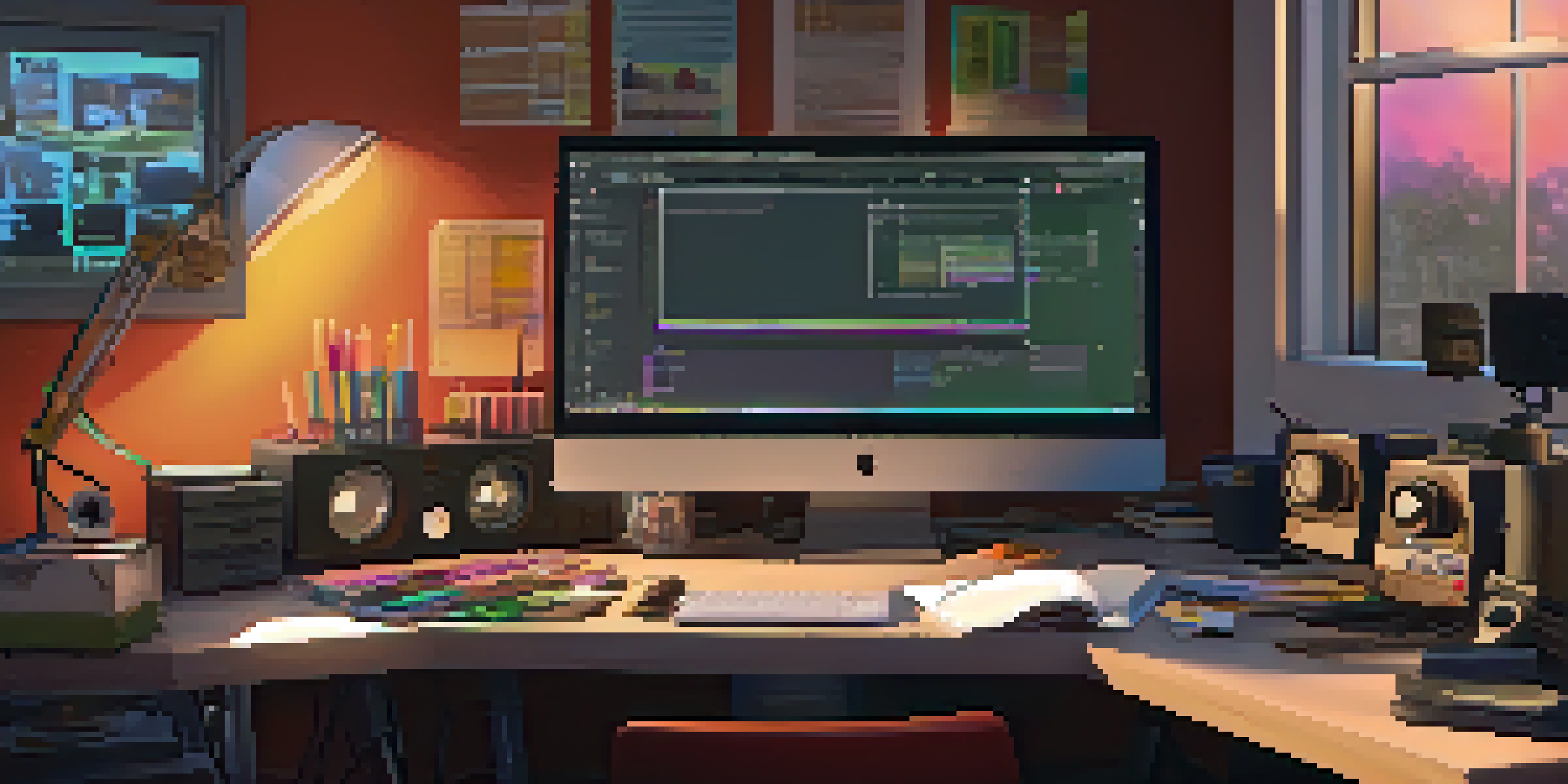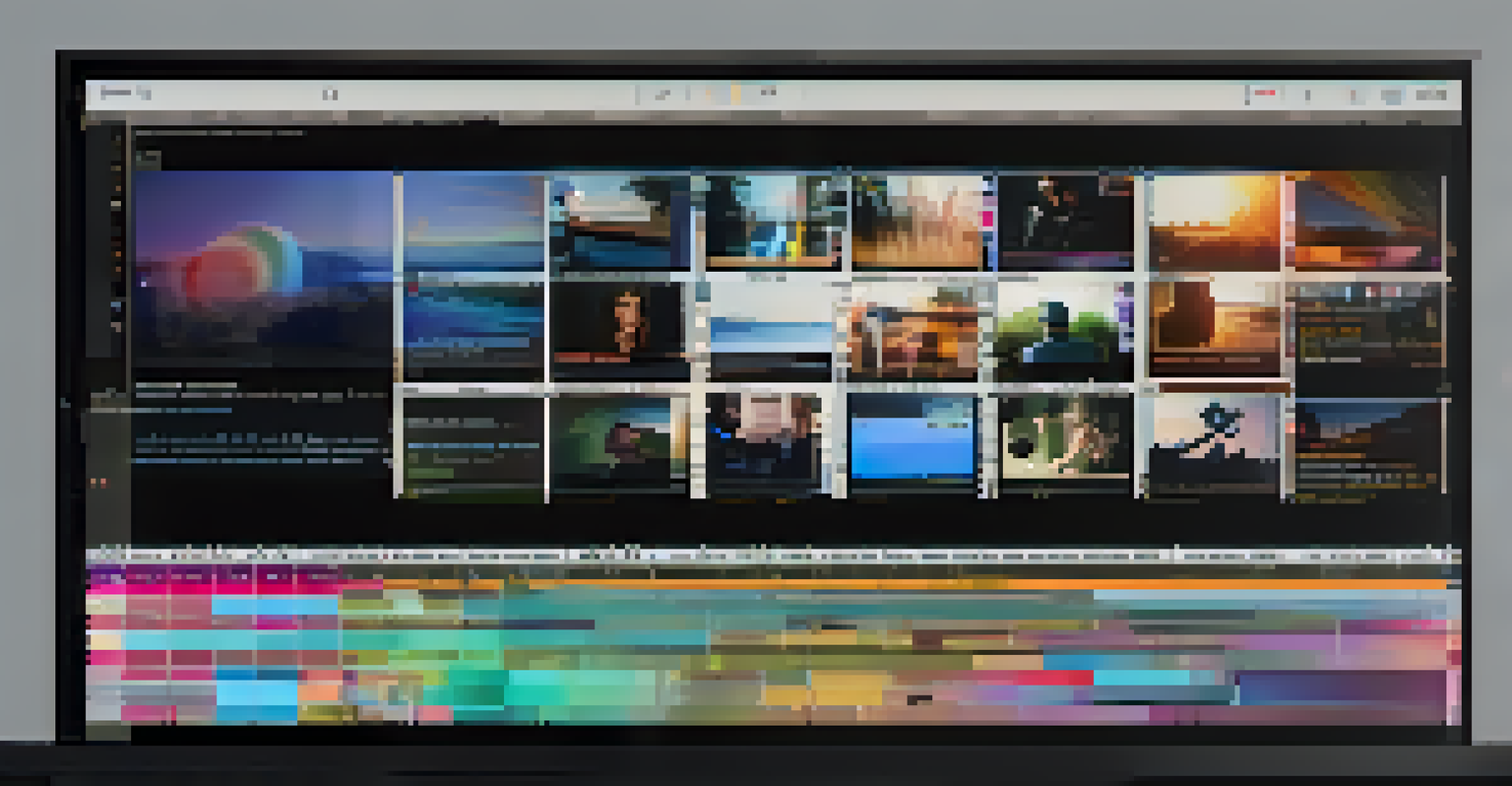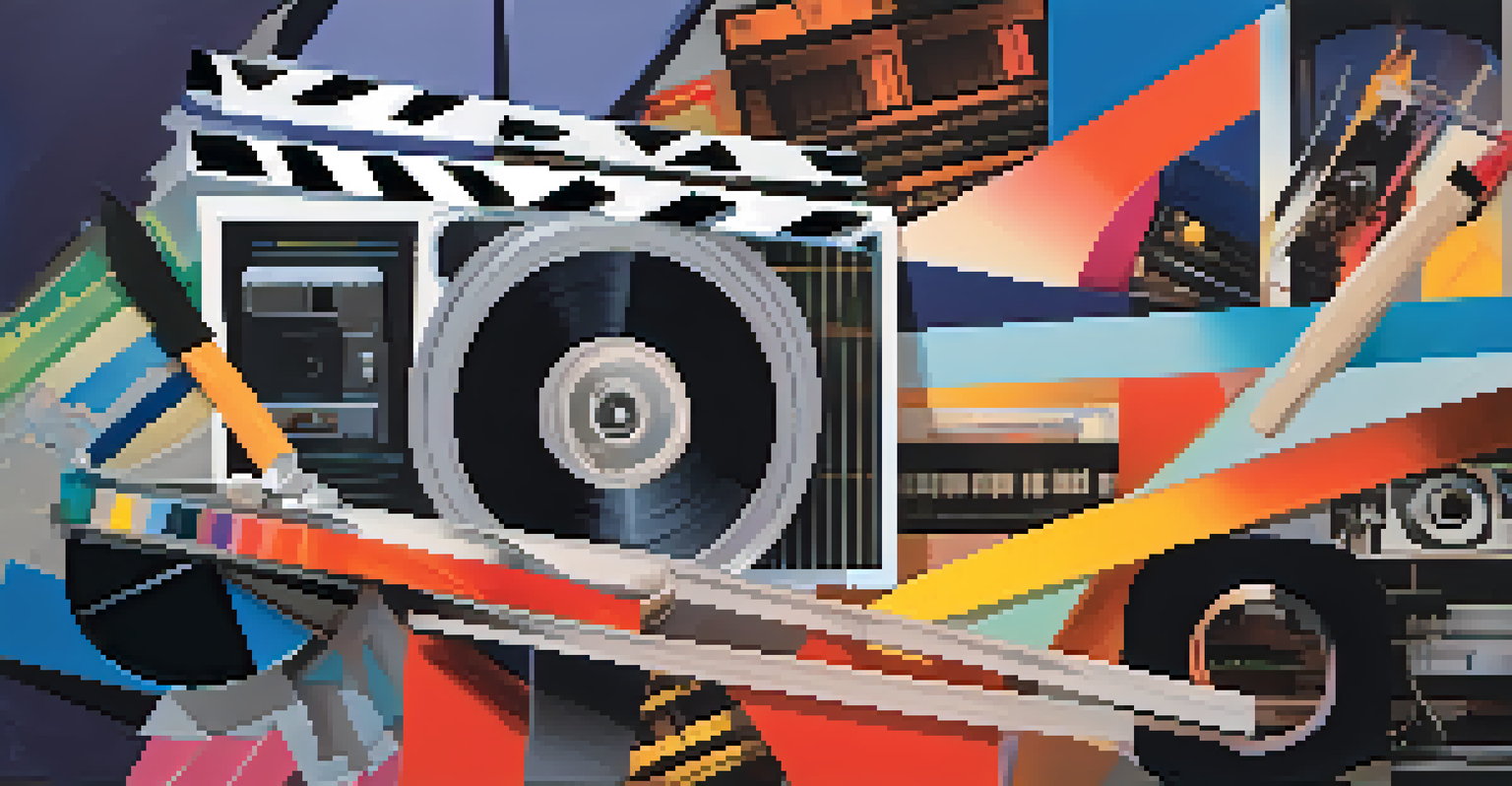The Impact of Film Editing on Audience Perception and Reception

Understanding Film Editing: The Invisible Art
Film editing is often dubbed the 'invisible art' because it works behind the scenes, crafting the final narrative. Editors are responsible for piecing together various shots to create a cohesive story, influencing how viewers perceive time, space, and emotion. For instance, a well-timed cut can heighten suspense or evoke laughter, transforming an ordinary scene into something memorable.
Editing is like a puzzle, where every piece must fit perfectly to create a cohesive picture.
This process involves selecting the best takes, adjusting pacing, and even altering dialogue for clarity or impact. Think of it as assembling a jigsaw puzzle where each piece represents a moment that contributes to the overall picture. When done skillfully, editing can elevate a film from good to great, capturing the essence of the story and engaging the audience more deeply.
Moreover, the rhythm and flow established by editing can guide audience reactions, making them feel more connected to the characters and events. It’s a powerful tool that, when mastered, can manipulate emotions, leaving a lasting impression long after the credits roll.
The Role of Editing in Establishing Tone and Mood
Editing plays a crucial role in defining the tone and mood of a film, often setting the stage for how the audience feels about the story. For example, quick cuts and fast-paced editing can create a sense of urgency in action films, while longer, lingering shots often evoke contemplation in dramas. This intentional manipulation of visuals and sounds helps audiences connect with the film on an emotional level.

Consider how a horror film uses editing to build tension. Sudden cuts or jarring transitions can create a sense of unpredictability, making viewers jump in their seats. Conversely, a romantic film may rely on smooth transitions to foster feelings of warmth and intimacy, illustrating how editing shapes our emotional journey throughout the film.
Editing Shapes Audience Emotions
Film editing uses techniques like pacing and transitions to evoke strong emotional responses from viewers.
By establishing tone and mood, editing not only enhances storytelling but also influences audience perception, guiding how they interpret the narrative. The right editing choices can turn a simple scene into an emotional powerhouse, leaving viewers feeling a certain way long after viewing.
Creating Narrative Structure Through Editing Techniques
Narrative structure is the backbone of any good film, and editing is essential in shaping that framework. Editors utilize techniques like parallel editing, where two scenes are intercut, to build tension and highlight thematic connections between different storylines. This strategy not only keeps the audience engaged but also enriches their understanding of the characters' journeys.
The best editing is invisible; it makes the viewer forget they are watching a film.
Take, for example, a film that juxtaposes a character's past with their present through flashbacks. This editing technique helps viewers grasp the motivations behind a character's actions, creating a deeper emotional investment in their story. By weaving together different timelines or perspectives, editors can create a more nuanced narrative that keeps audiences intrigued.
Ultimately, effective narrative structure through editing ensures that viewers remain engaged from beginning to end. When a story flows seamlessly, it allows audiences to immerse themselves fully, leading to a more impactful experience.
The Power of Pacing: Controlling Audience Engagement
Pacing is a vital element of film editing that directly influences audience engagement. It refers to the speed at which scenes unfold and how quickly the story progresses, shaping viewers' emotional responses throughout the film. A well-paced film maintains a rhythm that keeps the audience on the edge of their seats, eager to see what happens next.
For instance, action sequences often use rapid cuts to create a frenetic pace that mirrors the intensity of the moment. In contrast, a slower pace might allow for more emotional reflection during pivotal character moments. Balancing these elements is key to ensuring that audiences are not only entertained but also invested in the story.
Tone and Mood Through Editing
The way scenes are edited can establish the film's tone and mood, influencing how the audience connects with the story.
When editing is executed with pacing in mind, it can enhance tension, excitement, and emotional resonance. The careful manipulation of timing ensures that viewers feel the weight of each scene, making the overall experience more memorable.
Emotional Resonance: Evoking Feelings Through Editing
One of the most powerful aspects of film editing is its ability to evoke emotional responses from the audience. Editors use various techniques, such as music synchronization and visual transitions, to enhance the emotional weight of a scene. For example, a poignant score paired with a slow zoom on a character's face can amplify feelings of sorrow or nostalgia.
Through careful selection and timing of shots, editors can guide viewers through a range of emotions, from joy to heartbreak. This emotional resonance is what often lingers with audiences long after the film ends, as they remember not just the story but how it made them feel.
In essence, editing acts as a bridge between the narrative and the audience's emotions, ensuring that the film resonates on a deeper level. By skillfully crafting these moments, editors create experiences that are not only entertaining but also profoundly moving.
Audience Perception: How Editing Influences Interpretation
Editing significantly affects how audiences interpret a film, shaping their understanding of characters, themes, and messages. The way scenes are cut together can suggest relationships, foreshadow events, or even mislead viewers to create suspense. This intentional crafting of narrative can lead to varied interpretations, depending on how the editing choices are made.
For example, a scene that is edited to emphasize a character's isolation can lead the audience to sympathize with their plight, while a different edit might portray them as detached or unlikable. Such decisions can alter the audience's perception, influencing their emotional connection to the story.
Editing Enhances Narrative Structure
Effective editing techniques create a narrative structure that keeps audiences engaged and invested in the characters' journeys.
Ultimately, the editing process is a powerful tool that molds how a story is received and understood. By manipulating pacing, structure, and emotional cues, editors guide audiences on their journey, shaping their perception of the narrative.
The Evolution of Editing: Technology and Techniques
The field of film editing has evolved dramatically over the years, driven by advancements in technology and innovative techniques. From the days of physical film splicing to today’s digital editing software, the tools available to editors have transformed the way stories are told. This evolution allows for more creative freedom and precision in crafting narratives.
New technologies have introduced techniques like CGI integration and real-time editing, enabling editors to experiment with styles that were once unimaginable. These advancements not only enhance visual storytelling but also expand the emotional and thematic possibilities within a film.

As editing continues to evolve, so too does its impact on audience perception and reception. The ability to adapt and innovate keeps the art of editing fresh and relevant, ensuring that filmmakers can connect with audiences in new and exciting ways.
Conclusion: The Lasting Impact of Film Editing
In conclusion, film editing plays a pivotal role in shaping audience perception and reception. From establishing tone and mood to influencing emotional resonance, editors are the unsung heroes who craft the stories we love. The choices they make can elevate a film, guiding viewers through a rich tapestry of emotions and experiences.
As we’ve explored, the techniques and technologies of editing continue to evolve, yet the core purpose remains the same: to create a compelling narrative that resonates with audiences. Understanding the impact of editing not only enriches our appreciation of film but also highlights the artistry that goes into every frame.
So, the next time you watch a film, take a moment to appreciate the editing behind the scenes. It’s this invisible art that transforms raw footage into an engaging and memorable experience, shaping how we perceive and connect with the stories on screen.